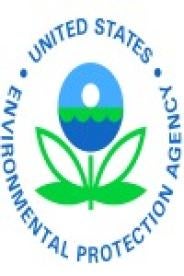On December 19, 2014, the U.S. Environmental Protection Agency (EPA) issued a 745-page prepublication version of its final rule governing the landfill and surface impoundment disposal of coal combustion residuals (CCR) from coal-fired power plants. The rule is to become effective six months from the date of its publication in the Federal Register (expected to occur by the end of the year). Ending several years of speculation regarding whether EPA would attempt to regulate CCR as a hazardous waste under the Resource Conservation and Recovery Act (RCRA) Subtitle C’s “cradle to grave” regulatory scheme, the final rule instead upholds EPA’s prior regulatory determinations (EPA’s 1993 and 2000 Bevill regulatory determinations) and regulates CCR as a solid waste under RCRA Subtitle D.
Importantly, the new regulations will not be directly enforceable by EPA. That is, although they are self-implementing, meaning they set “minimum” federal criteria which facilities must comply with without engaging state or federal agencies, the regulations do not provide EPA or states with authority to implement the rules through an existing permit program. Instead, EPA is strongly encouraging states to voluntarily implement the requirements of the rule through amendments to their Solid Waste Management Programs. Regardless of such state program amendments, EPA expects that states and the public will actively oversee implementation of the rule and initiate enforcement actions when necessary through RCRA’s citizen suit authority. To facilitate such oversight, the final rule requires owners and operators of coal ash landfills and surface impoundments to certify compliance and provide state agencies and the public with information regarding compliance.
The final rule’s lack of a traditional enforcement mechanism and established federally-based permitting program will likely create confusion as to how the rule is to be implemented and could, if states adopt their own regimes, lead to competing requirements and dual enforcement. Courts, rather than regulators, would appear to be left to address that confusion.
While the rule does not establish CCR as hazardous waste, it imposes extensive requirements for existing and new coal ash landfills and surface impoundments, including:
-
The retrofit or closure of existing surface impoundments and landfills that fail to meet engineering or location standards;
-
The closure of existing surface impoundments and landfills at active facilities that no longer receive coal ash (disposal units at closed facilities – facilities that no longer produce electricity – are outside the scope of the rule);
-
The closure of existing unlined surface impoundments found to contaminate groundwater in excess of a groundwater protection standard;
-
Weekly inspections of the structural safety of surface impoundments;
-
Restrictions on the location of new surface impoundments and landfills;
-
Extensive groundwater monitoring;
-
Remediation of contamination released from a surface impoundment or landfill;
-
Implementation of fugitive dust controls; and
-
Liner barriers for new units.
Many in the coal ash beneficial use industry have largely welcomed the final rule because it brings certainty to the market. Nearly half of all CCR is used in buildings, roads, and agriculture. EPA explicitly recognized the benefits of these uses and acknowledged, that when used as an input into a production process (i.e., as a product), CCR is not a waste and is not subject to regulation.
The EPA webpage on the CCR rule is at http://www2.epa.gov/coalash/coal-ash-rule.




 i
i

